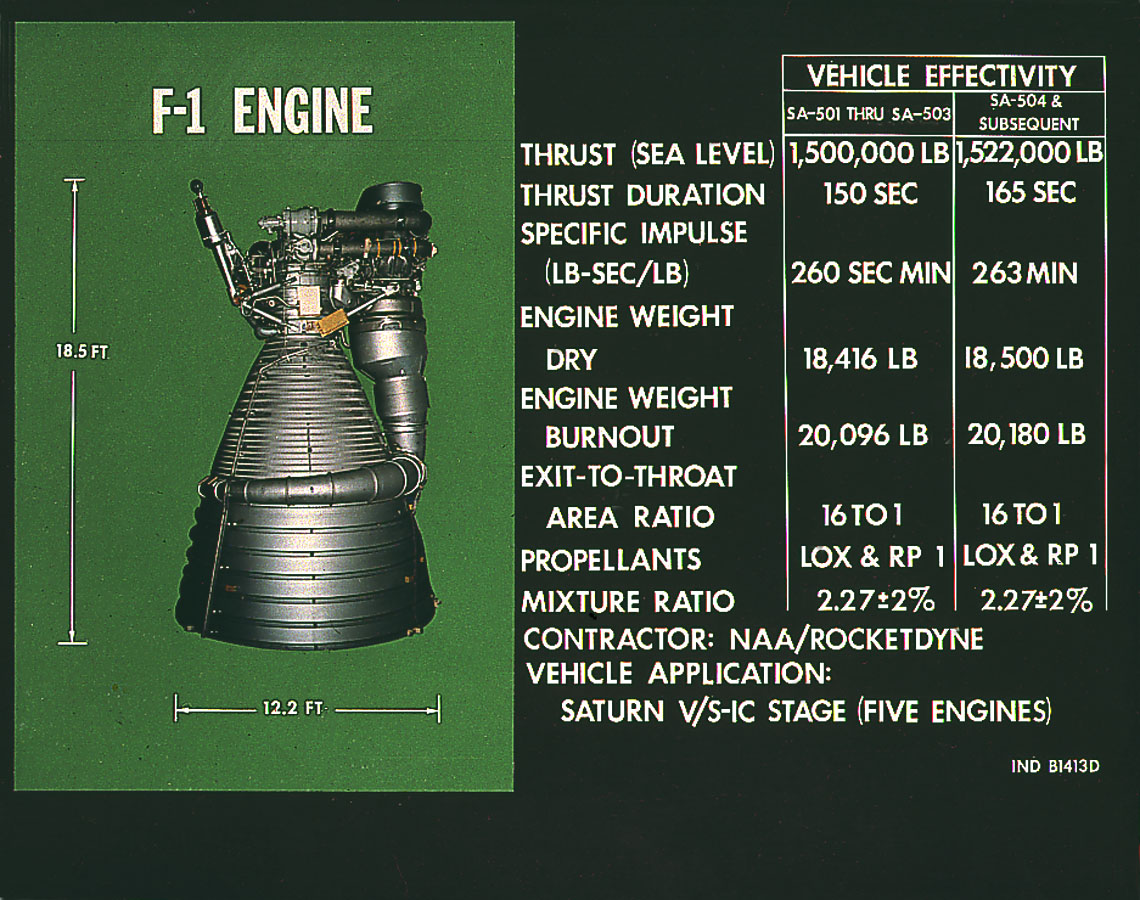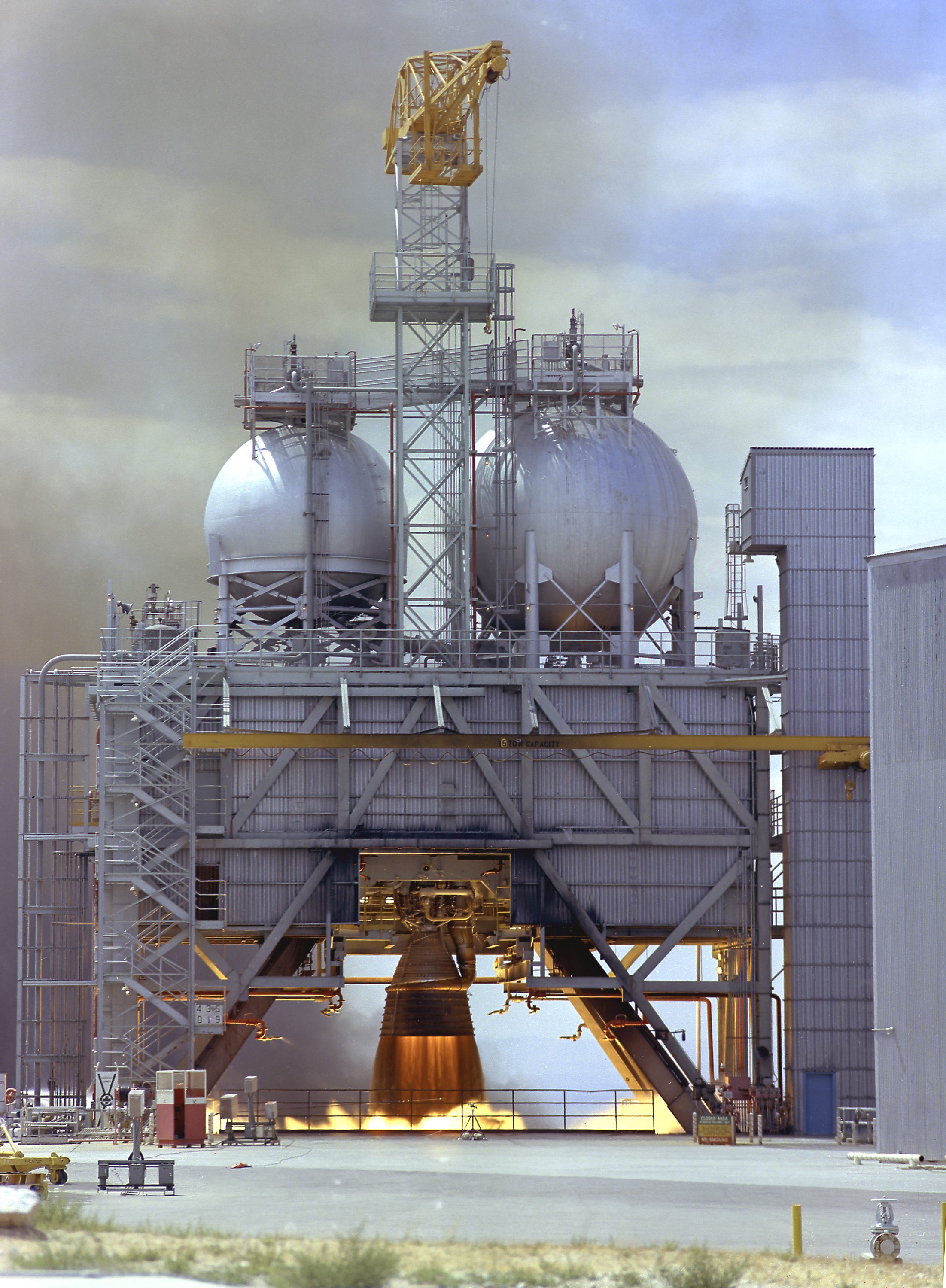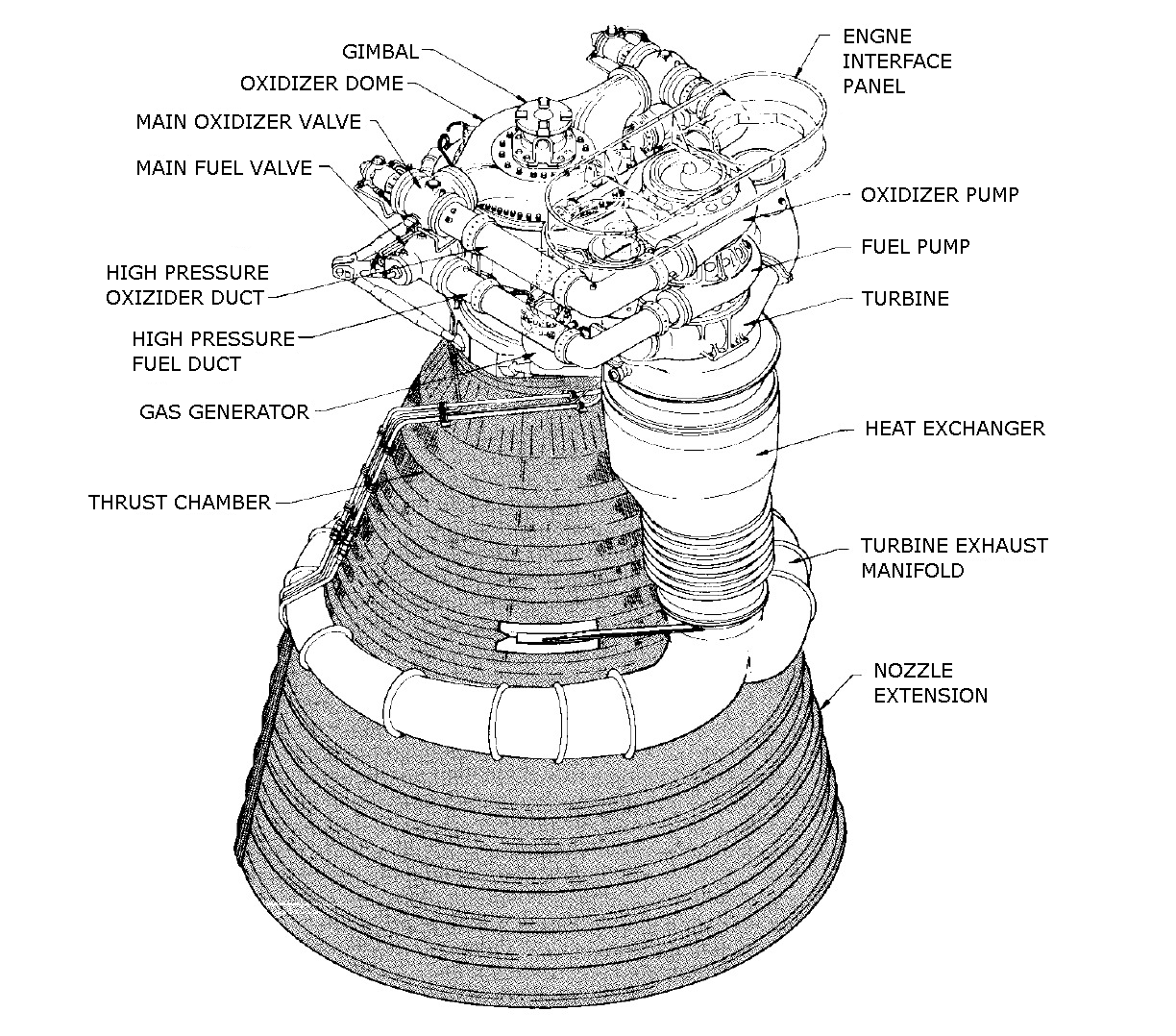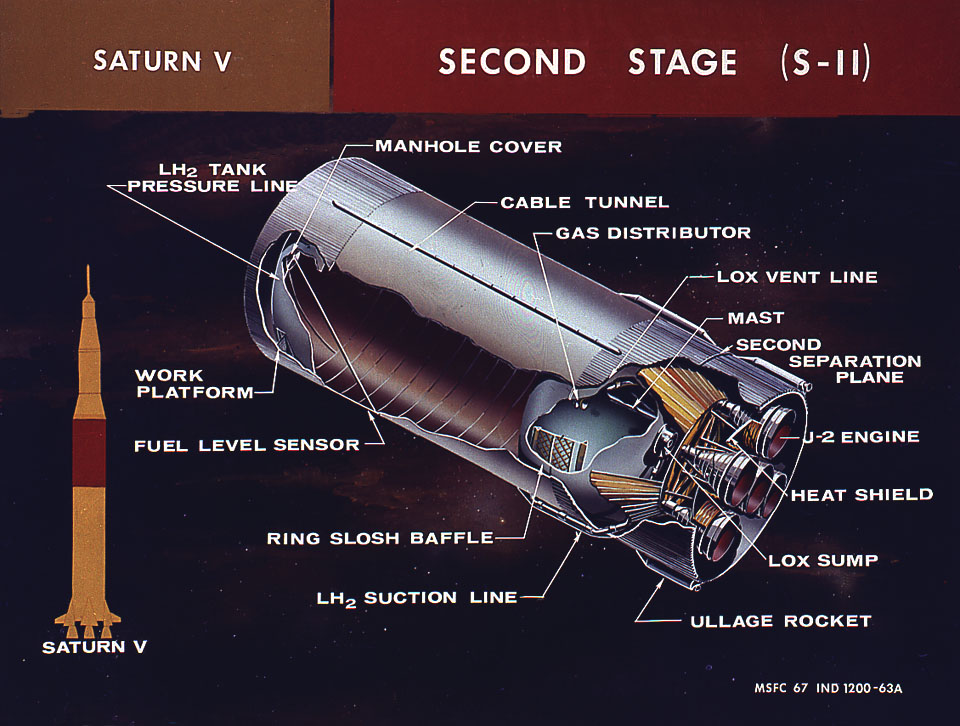Source http://upload.wikimedia.org
The goal of Saturn V was to carry Apollo space vehicles to the Moon and it was one of most powerful rockets ever built.
Today I want to start talking about rocket engines. Space rocket engines use two different
elements: oxidizer and fuel. Both elements compound propellant which itself is an energetic source independent from the surrounding environment. This means that the rocket engine could work in vacuum of the space without any other oxygen supply.
Hypergolic propellants are those whose components ignite on contact without any other external energetic supply, this is the case of liquid hydrogen and oxygen (a.k.a LH2 and LOX).
 Source http://upload.wikimedia.org |
| Liquid fuel rocket schema |
Rockets could be categorized depending on the type of fuel used:
- Liquid fuel rockets
- Solid fuel rockets
Solid fuel rockets are much more stables and simple than liquid fuel ones but normally their overall performance is lower and could not be shut down as reactions are self-sustaining. One example of solid fuel rockets are the space shuttle boosters (those large rockets place at both sides of the central tank).
Saturn V was a liquid fuel rocket and was composed by three stages:
- S-IC.
- S-II
- S-IV B
Source http://upload.wikimedia.org
S-IC
The first Saturn V stage was thrusted by 5 F1 rocket engines burning liquid oxygen (LOX) and RP-1 rocket fuel. These engines were developed by Rocketdyne company back in 1955. 4 of the 5 engines were placed in the outer part of the rocket and one more in a central position. The 4 outer engines rotatedby means of a hidraulic system in order to provide stability to the rocket. Propellant and oxidizier were inyected into the combustion chamber using a turbopump. This turbopump had to resist a very wide temperature range from 816 ºC in the gas inlet to -184 ºC in the liquid oxygen tank. Building F-1 engines was a very demanding activity and new materials were needed to be developed in order to cope with the violent shaking of engine startup and the temperatures generated within the engines. The temperature could reach up to 3200 ºC in the gas outlet.
 Source http://upload.wikimedia.org |
| F-1 rocket engine schema (Via Wikipedia) |
 Source http://upload.wikimedia.org |
| F-1 engine testing facility picture |
This stage burned out more than 8000 l. of propellant per second during 2,30 minutes and raising the rocket up to 70 km at 1500 m/s generating a total thrust of 33,85 MN where each F-1 engine provided 6,77 MN. This stage was built by Boeing company in their New Orleans facilities.
 Source http://upload.wikimedia.org |
| F-1 engine schema |
 |
| Source http://upload.wikimedia.org Saturn V first stage schema (S-IC) |
S-II
 |
| Source http://upload.wikimedia.org Saturn V S-II stage schema |
The second stage of Saturn V was developed by North American Aviation and built in California. This stage was powered by 5 J2 engines burning liquid oxygen (LOX) and liquid hydrogen (LH2) generating a thrust of 4,4 MN. J-2 engines were also built by Rocketdyne. Second stage engines where placed in the same way as the first stage engines. The development of this stage was the most complicated and suffered from several delays.
 |
| Source http://upload.wikimedia.org J-2 engine schema. |
In order to reduce the weight of this stage, instead of using two tanks for liquid hydrogen and oxygen a unique tank for both liquid oxygen and hydrogen was developed. This tank had two separate storage parts divided by an insulating phenolic resin honeycomb to maintain the temperature gradient between liquid hydrogen and oxygen (70º C). This improvement reduced in 3,6 tons the weight of the stage.
 Source http://upload.wikimedia.org |
| J.2 engine picture |
Stage S-II fully loaded with fuel weighed 481 tons of which 92,4% was propellant (LOX and LH2). Second stage worked for 6 minutes raising the rocket up to 174 km.
In the following map, the location of all S-II stages could be found:
S-IV B
Third stage of Saturn V was developed and built by Douglas Aircraft in California, it was thrusted by one J-2 engine which used the same fuel than the previously described stage. J-2 engine of this third stage was programmed for two ignitions, the first one to enter in orbit with a duration of 165 s and the second of 335 s for translunar injection where impulsed the lunar and command module to the Moon. This stage provided a thrust of 1 MN.
 |
| Source http://upload.wikimedia.org Saturn V S-IV B stage |
During translunar injection, third stage reached an speed near to Earth's escape velocity (11,2 km/s) impulsing Saturn V to the Moon orbit. Following translunar injection there was a 40 minute journey, after which third stage was released from payload which continued its journey to the Moon.
 Source http://upload.wikimedia.org |
| Saturn V S-IV stage |
Final assembly of Saturn V was done within Vehicle Assembly Building in Cape Canaveral space station ( later known as Cape Kennedy ). The rocket was moved to the launch pad using Crawler Transporter which was later used for transporting the Space Shuttle.
 Source http://upload.wikimedia.org |
| Vehicle Assembly Building |
S-IC and S-II stages were so large that the only way to transport them was by barge. S-II stage was moved from California to Florida through Panama Canal. The third stage transport could be done by plane due to the smaller dimensions of the stage but an special Guppy transport was needed.
Source http://upload.wikimedia.org
Saturn V was responsible for the launch of the following missions:
- Apollo 4
- Apollo 6
- Apollo 8
- Apollo 9
- Apollo 10
- Apollo 11
- Apollo 12
- Apollo13
- Apollo 14
- Apollo 15
- Apollo 16
- Apollo 17
- Skylab 1



You really should reference any pictures you use otherwise you may be infringing on copyright (It also makes it really frustrating to find how reliable the source is)
ReplyDeleteYou really should reference any pictures you use otherwise you may be infringing on copyright (It also makes it really frustrating to find how reliable the source is)
ReplyDeleteSorry, I have updated the blog entry with the references to the sources.
DeleteKind Regards